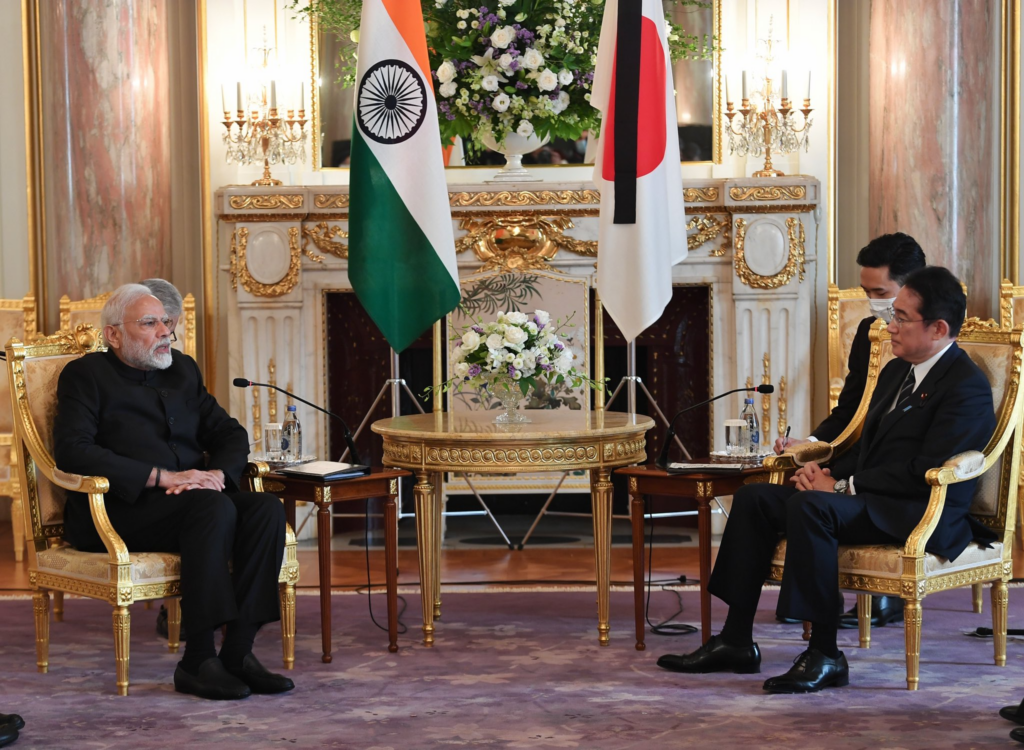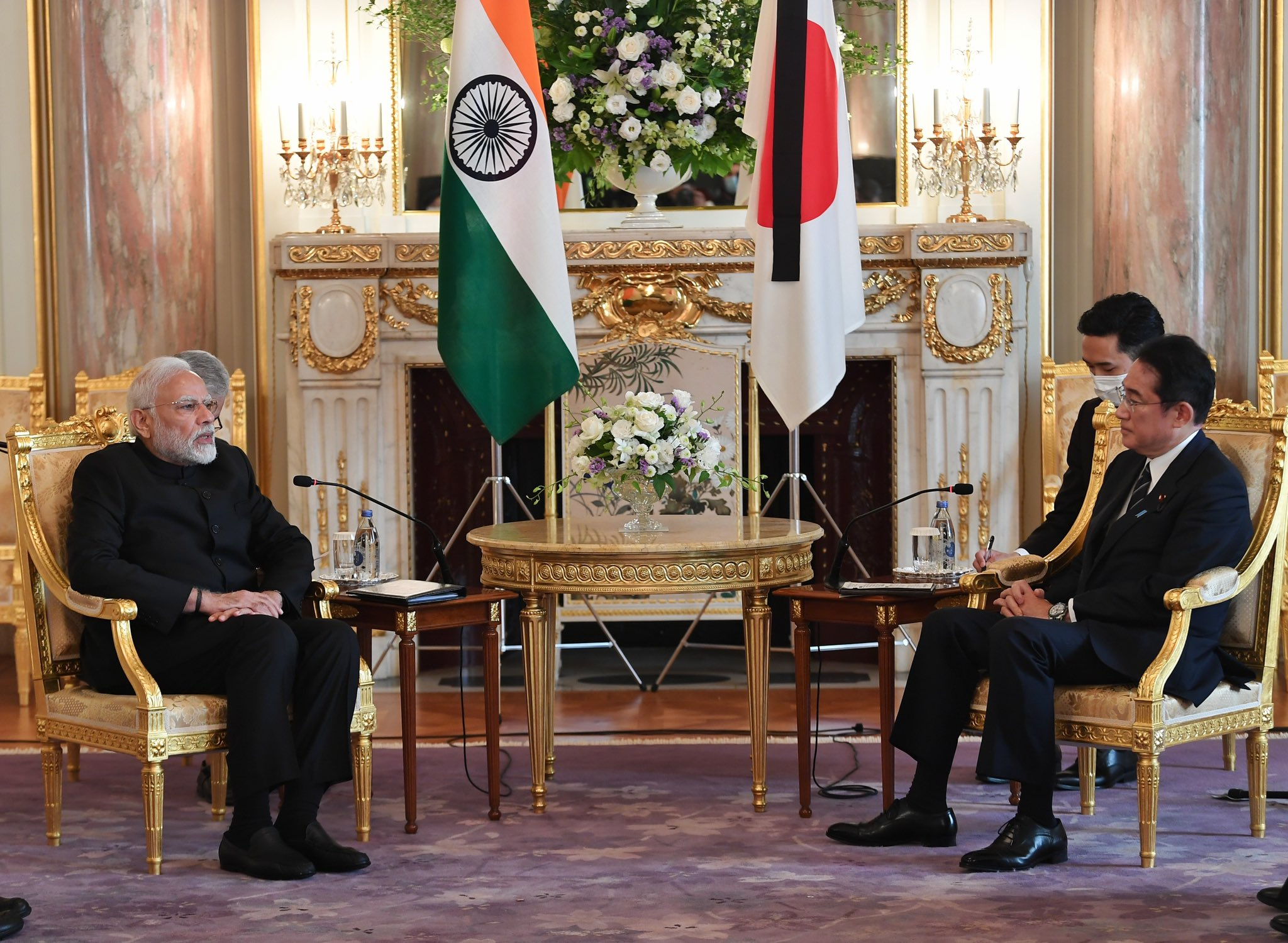
Indo-Japanese Relations Go Beyond the Pacific
Modi and Kishida talks point to evolving common strategies that may spill over to multi-lateral engagement at G-20 and G-7
Amritpal Kaur
Prime Minister Narendra Modi’s recent Japan visit was not limited to paying tributes to Abe San. Apart from representing India at his former Japanese counterpart’s funeral, Prime Minister Modi seems to have established a rather similar working understanding with the host government led by Fumio Kishida.

Kishida, who was foreign minister in Shinzo Abe’s government, did not want to miss the opportunity in striking a relationship with Prime Minister Modi and his right wing BJP government in India.
The two sides have thrown enough hints that Shinzo Abe’s vision for Indo Pacific partnership and larger alliance will continue to be the guiding principle in their relationship.
Both sides have recognized that Quad was evolving as the operative group to implement the Abe’s vision for Indo Pacific region. Enough commitments were also made to move substantively in the path laid out by Shinzo Abe.
Ease of doing business between two countries spread across trade, investments and manufacturing as well as services were a given in the whole gambit of bilateral relations.
While this is second time Fumio Kishido met Modi on September 27 after having been anointed as Prime Minister, evolving intricate relations between the two countries has become a talking point in global diplomatic circles for right reasons.
Insiders in Modi government do reveal that the Prime Minister chose to head to Japan for paying tributes to his friend Abe San rather than descending on London for Queen Elizabeth’s funeral.
Increased relevance of the East Asia in Indian diplomacy matrix is yet another talking point. This was at display a few days before when Defense Minister Rajnath Singh and foreign minister S. Jaishankar were in Tokyo for two plus two dialogue.
Defence Minister Rajnath Singh visited Inner Mongolia in September to forge defense and diplomatic ties between India and Mongolia. Minister Singh met Mongolia’s President Ukhnaagiin Khurelsukh and the Chairman of State Great Khural of Mongolia G. Zandanshatar.
Apart from holding delegation level talks with his Mongolian counterpart to hasten implementation of strategic partnership between the two countries, Rajnath Singh inaugurated Cyber security Training Centre built with Indian assistance at the National Defense University in Ulaanbaatar. India Mongolia Friendship School also got wings during Singh’s visit.
On September 8, Indian Defence Minister and Foreign Minister held a two plus two ministerial dialogue at Tokyo with Japanese leadership centred around substantive engagement between Joint Staff of Japanese Self Defense Forces and Integrated Defense Staff of India.
Japan participated for the first time in multilateral exercise MILAN. Both countries have operationalized the Reciprocal Provision of Supply Service Agreement. It was agreed that in the near future, Indian and Japanese Air forces will hold Air Force fighter exercise.
India invited Japan to engage in development of the emerging and critical technology domains and Japanese defense companies to invest defense corridors in India.
India pushed for maritime cooperation with Japan through its Indo-Pacific Oceans Initiative (IPOI) which is in line with Japan’s Free and Open Indo-Pacific (FOIP). Also, through Asean’s framework India and Japan have moved ahead to work on a greater Asian region.
Rightly so, S. Jaishankar noted that given the tumultuous international environment, the 2+2 meeting between India and Japan promoted Rules-based order ensuring respect for international laws, norms and commitment to safeguard common resources of the world.
Interestingly, both sides seem to have utilized the 2+2 meeting to reflect and coordinate approach on international issues. Also, in the scenario of aggravated environmental concerns, grim economic situation, Indo-Japanese cooperation seems to have moved beyond the immediate region, into the multilateral frameworks like QUAD, ASEAN platform, Re-CAAP and Supply Chain Resilience Initiative.
Fortified India – Japan relations will come handy when New Delhi takes over as G-20 chair and Tokyo taking charge of G-7.
(Author is a contributing scholar with CIHS)

